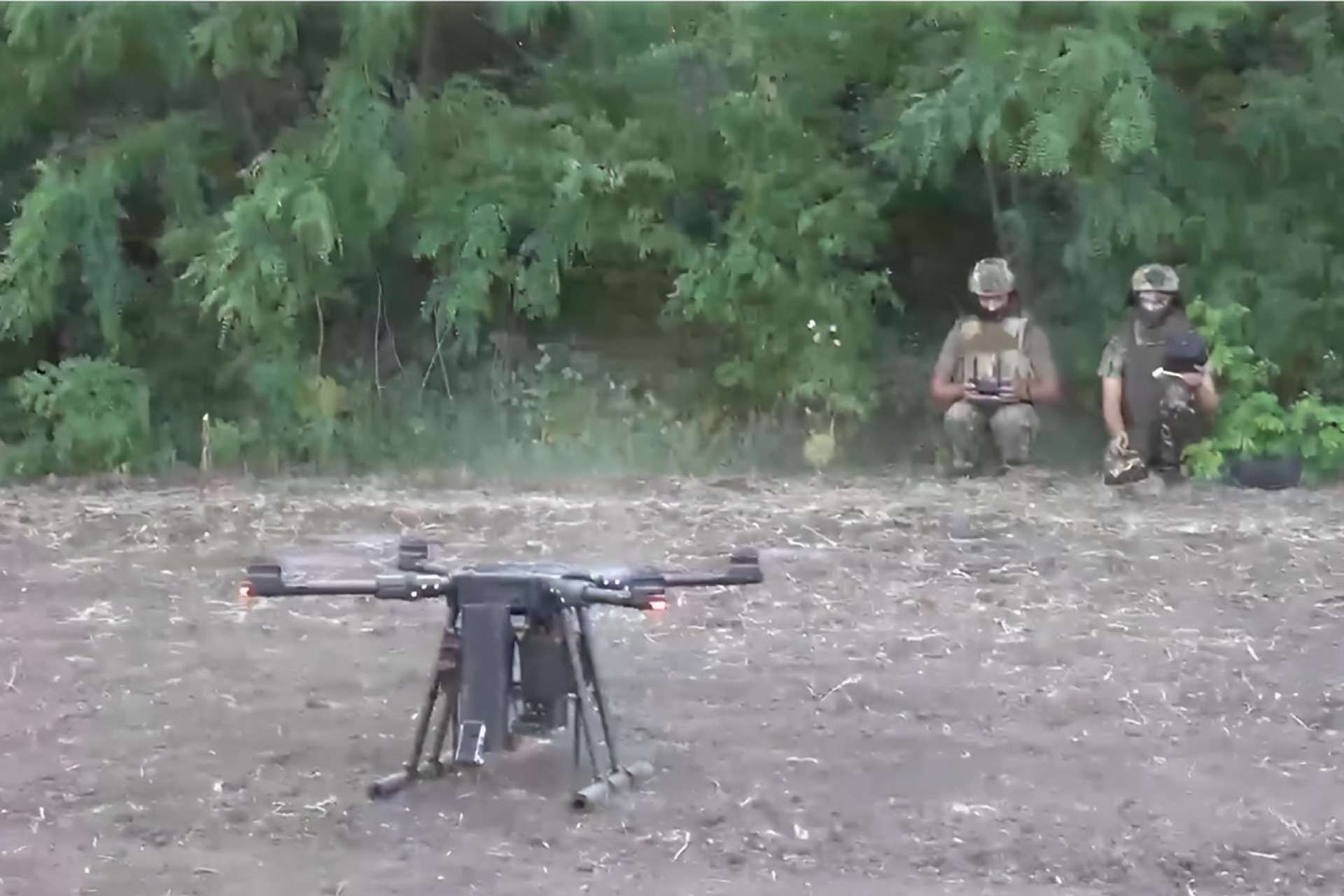Breaking News
Russian forces begin deployment of heavily armed Baba Yaga drones for munitions drops.
In southern Donetsk, the introduction of heavy industrial drones into Russian military operations signifies a significant shift in tactical approaches, as reported by The Russian MoD on Telegram. Russian troop groups have adopted the use of "Baba Yaga" type drones, noted for their robust capabilities in both combat and logistical roles. Follow Army Recognition on Google News at this link

Screenshot of the video showing the use of drones by Russian soldiers (Picture source: Russian MoD)
These drones have been outfitted by Russian military technicians with a new release system capable of carrying and deploying two 82mm mines, enhancing their impact while remaining undetectable by Ukrainian electronic warfare systems. This adaptation allows the drones to conduct precise strikes, minimizing the risk of detection and countermeasures.
Beyond their combat applications, these heavy drones are crucial for logistical support. Their substantial payload capacity enables the rapid and secure transport of critical supplies directly to front lines. Drone operators efficiently deliver ammunition, medical supplies, and food to combatants, ensuring sustained operational capability and support in challenging and often isolated terrains.
The drone "Baba Yaga," named after a mythical figure from Slavic folklore, was originally a Ukrainian drone used against Russia. This drone, capable of carrying loads up to 17 kilograms, has been pivotal in nighttime operations, allowing the Ukrainian army to maintain its positions along the eastern Dnipro River, particularly in the Kherson region.
According to Forbes, drone operators played a crucial role in the Krynky operation in November 2023, where Ukrainian forces established a bridgehead. This operation surprised both Russian troops and international observers with its success, thereby expanding Ukraine's summer offensive.
"Baba Yaga" stands out for its ability to evade Russian electronic jamming efforts, thanks to an advanced electronic system. This feature allows the drone to reach targets considered safe by enemy forces. However, its capabilities are limited at night without infrared cameras, increasing the cost per drone and explaining why these drones have drawn Russian interest.
Challenges remain for this drone, including reduced range due to its heavy armament. Moreover, although the drone is relatively noisy, making its presence known to Russian troops, this does not guarantee that it can be easily neutralized.
The dual-use capability of these heavy drones highlights a strategic evolution in the use of unmanned aerial vehicles (UAVs) in warfare, combining combat effectiveness and logistical efficiency to maintain continuity and support in active conflict zones.


























